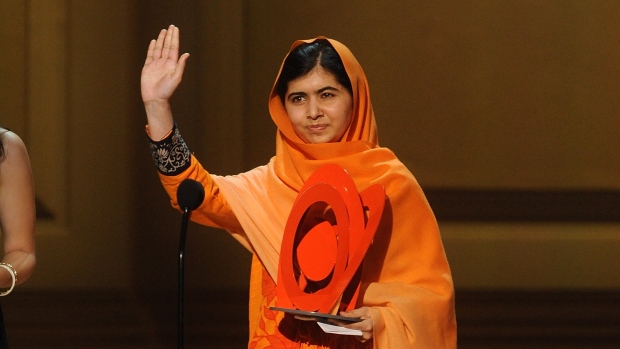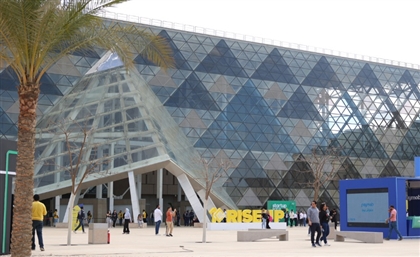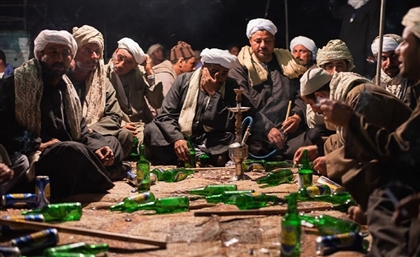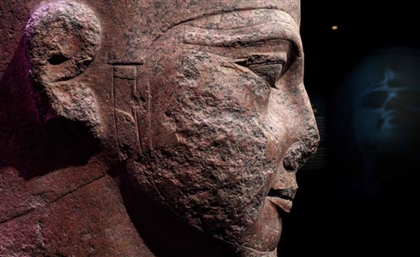The Many Veils of Malala
Anam Sufi explores the varying facets that comprise what and who Malala Yousefzai is and represents; overtly stressing the need to scrutinise media in search of veracity.

Malala Yousefzai is a name that we’ve all heard echoed across international news stations since 2012. The world watched with bated breath as paramedics struggled to save the then 14-year-old girl’s life after the Taliban, in the Northern Swat Valley of Pakistan, had shot her in the head. Her courageous recovery, unyielding determination, and continuing struggle to combat barriers to female education in her homeland are truly deserving of grand adulation. However, this view of Malala is highly circumscribed to fit a heroic mould of idyllic founding. And while I won’t go so far as to say that this image is a farce, I solemnly believe it captures only the tip of the iceberg in terms of what Malala truly and wholly represents.
What I hope to accomplish through this article is to highlight the necessity for you, as a reader, and hopefully as a seeker of truth in this world, to filter all aspects of news so to get as close as possible to the core of the diluted propaganda we are so often served into shot glasses, complete with sliced lemons to polish the delusion. And to exemplify this, let’s take a look at what’s behind the veil of Malala.
In the wake of her new book release, an autobiographical work entitled, I am Malala, the young teenager has once again found herself in the spotlight. Only this time, framed in conspiratorial controversy. The saying, “one man’s terrorist is another man’s freedom fighter” comes to mind in light of the polarised views that have gripped Pakistan in terms of what Malala represents. Banned from many schools in the country, under the pretense that the content within the book is counter Islamic and teeters on the edge of blasphemy, many in Pakistan have begun to view Malala as a political pawn being used by the Western powers to tip the balance of Islamic influence in the region.
Now would prove an adequate time to familiarise one’s self with the current state of affairs in Pakistan. Much like Egypt, Pakistan has struggled to forge a wholesome and collective identity through much of its existence. When the Second World War came to a close, and Cold War politics transformed into a boiling battlefield confrontation between the US and USSR in Afghanistan, the US signed off on the distribution of arsenal to the rebel forces in Afghanistan who were against the ruling regime that was heavily sympathetic to the political ideologies of the USSR. Arguably, this may be viewed as the starting point to the rise of Taliban power, ironically, fuelled and funded by the US. During the Russo-Afghan war, throngs of people left Afghanistan and fled into neighboring Iran and Pakistan, initiating the protracted refugee crises in Pakistan. This crises is what has solidified the presence of Taliban influence in the receiving nation, giving rise to a bloody history; one that is caught between theological understandings of Islam and the endeavour to establish a country based on universal human rights and democracy.
Against this social and political backdrop, the emergence of Malala demands at least some semblance of meticulous inspection. What does Malala mean? And to whom? The answer to these questions is that she serves varying purposes to varying parties. In the most non-skeptical light, indeed, Malala is a budding teen fighting for her right to an education, and deserves laudation for her heroic display of courage. However, Malala could just as well have been an Amira from the same village, an Aniso from Somalia, even a homeless Margot on the streets of Paris. So why Malala?
Not to sound too abstruse, but the answer traces back to global politics. These politics in turn have their roots in the colonial policies of the 19th century. Today, when the United States drops a flurry of drones in Pakistan, claiming that it is battling terrorism, and therefore, the numerous losses of civilian lives is a sad but justifiable collateral damage, finding someone like Malala as a pawn to mobilise local support of their own citizens, proves a gold mine. After all, when girls like Malala attend the Glamour Awards, alongside Lady Gaga and other celebrities, her humility and modesty certainly do pick at one’s heartstrings. The “reason” for the war is blasted across millions of television screens, driving home a “noble cause” for what in reality can only be called, a terrorising display of aggression that repeatedly calls Pakistan’s sovereignty into question. Accordingly, one might view the advocacy of Western powers to place Malala on a pedestal as a display of neo-colonialist attempts to act upon today’s equivalent of “the white man’s burden.”
Stepping away from international politics, the question, "Who is Malala?” gains further momentum when placed in the context of her homeland; Pakistan. Malala has bought to the forefront a largely ignored point of contention within numerous striates of Pakistani society; the divide between religion and secularism. Much of what Malala says in the book, including her censure of Salman Taseer’s assassination a few years earlier, directly challenges some of the more contentious Islamic principles within Shariah law. Thus, she emerges as a symbol of Islam caught in the cross fires of modernity. She has become a solid and tangible representation of bifurcating viewpoints; where one insists on adherence to Islamic traditions, and the other paves the way for human rights driven adjustments to law and order. Consequentially, adding greater pressure to the administrative and social forces of Pakistan to take a stance on the philosophical validity of the Taliban.
The appreciation of one story over the other in a convoluted blend of tragedies and triumphs that sprinkle the world over is something that should always demand scrutiny. I won’t say I don’t have an opinion on who and what Malala is, rather, I do. But I’ll conclude on the salient point that what I have to offer is but an opinion shaped by an active appeal to take into account the varying politics, both intergovernmental and social, that comprise the image of Malala in its entirety. And using her as a catalyst, I ask of my readers, to implement such keen inquiry and inspection to all facts and fallacies disseminated through the media.
- Previous Article I Got Banged!
- Next Article Nomades Land
























